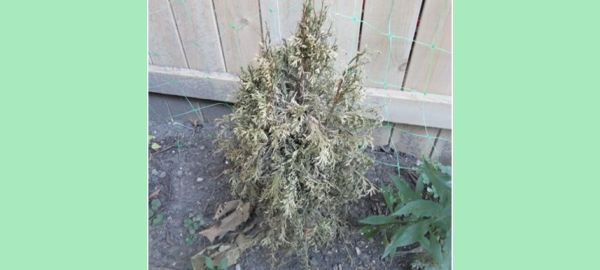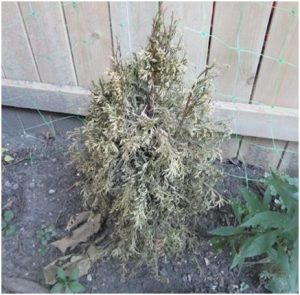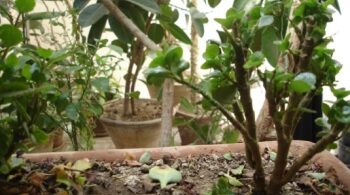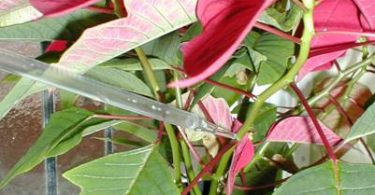Our plant doctor, Radko Tichavsky, answers your questions about houseplants and crops for May 2016. Send your questions to [email protected] Please include your approximate location and climate.
Radko Tichavsky
Radko Tichavsky is a Czech born Mexican Agrohomeopath. He is a co-founder and director of Instituto Comenius in Mexico and author of Handbook of Agrohomeopathy, 2007 (Spanish) and Homeopathy for Plants, 2009 (Spanish) and creator and teacher of Holohomeopathy.
Agrohomeopathy Course!
Radko Tichavskyi is now offering a one semester virtual course in Agrohomeopathy (in English). You can learn how to define and analyze holons and how to repertorize the specific homeopathic treatment beyond just disease or pest names. You can find out more here: www.icomenius.edu.mx
http://icomenius.edu.mx/index1034.php?lang=esp
A Materia Medica and Repertory for Plants: Mark Moodie hosts the website Considera which provides a growing M.M and Repertory for plants and discusses resources for biodynamics and Agrohomeopathy The website allows the world community to contribute their experiences in planting.
Greetings Mr. Tichavsky,
I was recently asked by a grower of butternut trees whether there was some way agrohomeopathy might help strengthen the juglans cinerea against the butternut canker fungal disease (sirococcus clavigignenti). I have no experience using homeopathy for plants and would appreciate any insights you might be able to provide. We are located in Ottawa, Ontario, Canada.
Thank you very much.
Sincerely,
Maria – PD Hom (UK)
Radko Tichavsky:
Dear Maria,
The butternut canker in Juglans spp. is a growing problem in the USA and Canada. It probably occurred due to biotic and abiotic stressors linked to climate change. Fungus spores of Sirococcus clavigignenti-juglandacearum are transmitted in different ways: insects, birds, water flow passage and even fog can be the vehicle of transmission of the disease. The fungus can be disseminated through the propagation by seeds. It is known that the fungus can sporulate from standing dead or felled trees for more than 20 months. Therefore it is important to remove dead trees and burn them. The preventive homeopathic treatment has to be made with Ricinus communis 12 CH. It contains high amounts of shikimic acid which is the metabolic precursor of group of metabolites opposed to the proliferation of the funghi Sirococcus clavigigneti-juglandacearum. In sick trees you can apply Ganoderma lucidum 12 CH as a primary remedy. Complementary remedies are Hypericum perforatum, Drosera and Aloe vera at potency 12 CH.
Dear Mr. Tichavsky,
I live in Ireland and grow my own vegetables, potatoes, tomatoes. Most of my growing is done in two poly tunnels. I have a problem with Green Fly/ Aphids which really have taken over. Slugs and snails are another problem in the tunnels and more so outside. I can’t seem to grow anything outside, as it will be eaten by slugs and snails. Caterpillars are another problem. And blight on my tomatoes.
I have used some homeopathy remedies to try and combat these pests but to no avail. Can you please help? It is really frustrating.
Thanks
Ollie Greene – Mullingar Co. Westmeath, Ireland
Radko Tichavsky:
Dear Ollie,
Homeopathic work in protected crops, for example poly tunnels, is extremely complex, since the space protected by one side does not allow the entry of some pathogens, but once these are established, the same protection provided in the form of a wall of plastic does not allow the entry of other predators and organisms antagonistic to the pathogenic organisms. The trigger of a lot of tomato pests are frequently nutritional deficiencies starting from calcium deficiency. It continues typically with phosphorus and ends with selenium, cobalt or copper or ferrum depending on the pest.
In this sense, the work must always start from the soil with application of bionosodes of soil, followed by applications Sulphur 6 CH, then complex of Calcareas 6 CH (Calcarea carbonica , calcarea phosphorica and calcarea fluorica) and then with applications of symptomatic homeopathic remedies that may attend problems as they appear in the crop. It is difficult to encompass a entire cycle of a crop in a simple answer, but as initial advice: you should start worrying about the vitality of the soil, reducing the amount of nitrogen and animal manure on the soil.
It would be a good idea to learn to combine different crops. An excellent combination for tomato crops should be to intercrop it with basil, for example. Aromatic plants interspersed with crops can be always of great help. Cabbage, spinach or barley as options can be intercalated with potatoes to reduce the presence of insects. Additional help can be had from applying Oxalis 6 CH, Ruta graveolens 6 CH, Sambucus nigra 12 CH, Ricinus communis 12 CH, and Schinus molle 6 CH.
Dear Radko Tichavsky,
I am from Middle West India where we have around 500 mm rainfall and the present temperature is 33 to 35 C daytime and the night temp. 24 to 27 C. First of all thanks for your guidelines with which I can successfully grow Hot pepper crop.
Now I have difficulty in managing my 2 crops
- COTTON
We have sucking complex – JASSIDS (Leaf Hoppers), Thrips, Aphids & White fly this sucking complex all present at a time. Also facing problem of PINK BOLLWORM
- RED GRAM (Cajanus cajan)
We have problem of LEAF ROLLER, Pod bugs (Riptortus pedestris) & Pod borer (Helicoverpa armigera)
Kindly suggest solution for the same.
Thank you
Sandeep Mundada
Radko Tichavsky:
Dear Sandeep,
The constitutive remedy of the cotton is Zea mays (corn). A homeopathic remedy made from corn seeds should strengthen the vitality of cotton crops in general. For the pest management you are mentioning, you can use Rosmarinus officinalis, Hyssopus officials and Foeniculum vulgare in potencies of 6 CH. Regarding Cajanus cajan, this plant is very sensitive to calcium deficiency, so you can apply Calcarea carbonica 6 CH alternated with Opuntia ficus-indica and Verbascum thapsus at 6 CH potency. Also helpful is a homeopathic remedy made from soybean seeds at 6 CH potency.
Dear Radko,
Here is a picture of my dying Cedar Trees which were bought this May and seemed to like the shade until a couple of weeks ago. As the big one looked parched I thought I would try Belladona 30C and Bach Rescue Remedy and indeed it seemed to slow and turn the problem around. Now it is just not happy and I feel this one and a second one which has started to yellow, seem doomed. I water them a bit every day with the other plants. I live in Toronto Ontario and the summer has been mostly hot and dry. I have watered almost every day, but not with a huge amount of water. The average temperature right now is probably 75 degrees over the last 2 months. It goes by the name of Emerald Cedar.
Thank you
John Board
Radko Tichavsky:
Dear John,
The apical damage to the Thuja spp. is frequently caused by abiotic stress (high temperature environment, chlorined water, and ozone at ground level) which are the typical constraints of Phytophthora sp. pathogenesis in this plant. The use of chlorinated water eliminates magnesium available in the plant. The constitutional remedy of Thuja sp. is Rosmarinus officinalis and complementary remedies are Thymus and also Achillea millenfolium and Apium graveolens. When the affection by Phytophthora covers more than half of the tree, usually the prognosis is not very optimistic, but you can try to save your tree as follows:
You should seek watering little and in a constant manner as you have done so far, but leave the water 24 hours in the air before applying (not directly from the tap). Apply Rosmarinus, Thymus and Achillea millenfolium at 12 CH potency, alternating them, sprayed on the plant. In addition every 5 days apply Magnesia phosphorica 6 CH on the soil.









We are all very grateful for this column. We gain the wisdom of Radko Tichavsky’s many years of research in Agrohomeopathy.